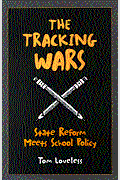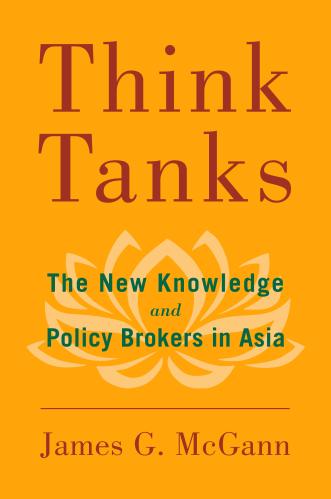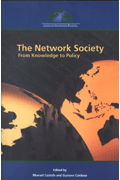We in the education policy world are familiar with America’s unflattering performance on international assessments like the TIMSS and PISA tests. Yet, not everyone may be as familiar with the fact that the U.S. is also one of the more unequal countries on these international assessments when comparing disadvantaged students’ performance against those from more advantaged backgrounds, as that nuance is easily lost in the hand wringing about the middling performance levels overall. Clearly, we have our work cut out for us.
Yet, maybe this mediocre performance record is not due to inadequate teacher preparation or quality, funding inequalities, lack of universal preschool, or any other policy that tends to dominate these discussions. Rather, maybe the blame lies with how we teach our kids to read and write, which is inherently inefficient and reinforces preexisting inequalities. This is the central argument behind E.D. Hirsch, Jr.’s new book, Why Knowledge Matters: Rescuing our Children from Failed Educational Theories, and the topic of conversation at our recent Brown Center event.
Specifically, Hirsch criticizes the typical American approach to language instruction, which places great emphasis on skills like finding the main idea or making inferences from clues in the text, yet fails to be prescriptive about the content that students should master. Those who have seen Hirsch’s prior work will most likely be familiar with the basic ideas presented here.
These skills-based arguments, according to the author, appear to be gaining prominence now as policy discussions on educating the 21st century workforce implicitly devalue content and place an even greater emphasis on skills mastery (under the assumption that what students need to know in the future will continue to evolve, while the skills will be the same). Yet, Hirsch claims this approach is invalid because it mistakes the means (skills) with the end (mastery of content necessary to be functional in American culture). Further, the current trends toward increasing testing and the stakes attached to it for both schools and teachers lead to a counter-productive narrowing of the curriculum away from subjects that actually teach content (like science and social studies) to a subject where standardized tests do not prescribe content (reading and language arts).
Improving instruction to optimize learning
This skills-focused orientation pairs quite naturally with the dominant attitude in American schools towards student-focused instruction. This perspective puts the teacher in the role as “guide on the side and not the sage on the stage,” as the common adage goes. Skills are assumed to be universal across content areas, and students really unleash their learning on the things they engage with—be it medieval history, fashion, or comic books. Thus, prescriptions about what to teach are not deemed necessary to help students succeed. Yet, Hirsch argues, this student-centered instructional approach is not research based and likely makes the teachers work harder in a constant tailoring of instruction to an endless supply of students with their own unique interests.
Hirsch’s criticisms of student-centered teaching dovetail nicely with findings earlier this year from the National Council on Teacher Quality’s report Learning about Learning. This study showed the large majority of textbooks used in most teacher training programs fail to cover the six fundamental strategies that have consistently demonstrated an impact on helping students master new material, based on consensus in the research community (which include things like regular quizzing, returning to concepts weeks and months after covering them, and rotating solved problems with unsolved problems). Rather, most textbooks focus on strategies to individualize instruction by diagnosing students’ learning styles, promoting student engagement, and the benefits of cooperative learning, all of which have less consistent evidence of efficacy. Thus, Hirsch’s claims about the dominant mode of student-centered instruction lacking research support seems sound.
Whose culture?
It’s worth pointing out here that Why Knowledge Matters is not overly prescriptive about what the content should be (though Hirsch certainly is not ashamed about plugging the Core Knowledge Foundation’s work). Yet, prior arguments about his views of acculturation first described in Cultural Literacy about what constitutes core knowledge continue to apply here. Namely, discussions about content are inherently political and social debates, as they elevate, denigrate or ignore various elements of culture, and not all members of society share those same values. Just look at discussions about how to teach the Civil War, evolution, global warming, or sex education.
Hirsch’s approach to defining the core content as described in the book—identify the culture as it currently is and teach that—seems defensible. However, this strategy ignores the fact that what we teach to many students today influences the culture of tomorrow. In this sense, Hirsch’s definition of core content feels uncompromising to those who would like to foster a culture where various multicultural elements are represented.
Curriculum the key to unlock learning
The most persuasive part of the book, to me, was chapter 7, entitled “The Educational Fall of France,” which details how France’s change to its national curriculum in 1989 turned the country from one of the highest achieving and equitable countries to one of the most inequitable countries with middling overall performance in the course of just a few decades. Hirsch also discusses the cases of Germany and Sweden, both of which saw dramatic changes in performance as they changed their curriculum.
Based on Hirsch’s interpretation of the evidence, France’s fall was due to changing from a national curriculum with established prescriptions for content that vertically aligned over time to continually reinforce and build on prior learning to a curriculum that instead looked similar to our American model based on skills and focused on students’ natural development without prescribing any content. This shift, Hirsch argues, hurt all kids as the new model failed to build cumulative knowledge in a systematic way. Moreover, it hurt disadvantaged kids even more, as the middle-class and educated parents were able to augment students’ school instruction with their own experiences out of the classroom, while disadvantaged students generally lacked access to such help.
I agree much can and should be done to improve how we approach curriculum and instruction in our public schools. Comparative analyses from Matt Chingos and Russ Whitehurst of curriculum effects relative to other education interventions show curriculum can make a greater difference for students. Moreover, as Tom Kane has previously argued, using curriculum as a lever to improve student achievement offers a particularly high bang for the buck, since the marginal cost required to switch from less effective to more effective curricula is close to zero. In addition, such decisions likely face less political resistance than increasing accountability stakes for schools or teachers, which seems to be the default lever yielded in most states.
Finally, I would argue that discussions about improving curriculum must include a discussion of governance. One of the reasons why we pay so little attention to curriculum is because it is generally deemed a local affair, and as such, data about what gets taught in which subjects for whom is sorely lacking. Yet, why do we leave such important decisions to local discretion? Leaving curriculum decisions to be made at this level implicitly has its tradeoffs: favoring locally responsive decision making over the potential benefit that could be gained by having a specialist at the state level to navigate this decision. Are district leaders that much more insightful about what curriculum is best for their students? Ultimately, this is an empirical question that we need more evidence on to really say what is better for students.
In the end, Why Knowledge Matters contains some thought-provoking case study evidence that helps further the case for prioritizing content, and not just skills, in our public school instruction. I join Hirsch in encouraging more discussion and research on how we can strategically improve instruction through curriculum in our schools.









Commentary
Instruction, culture, and curriculum in E.D. Hirsch, Jr.’s “Why Knowledge Matters”
October 25, 2016